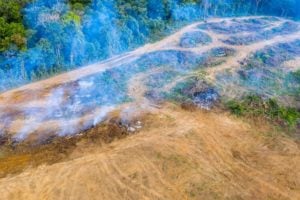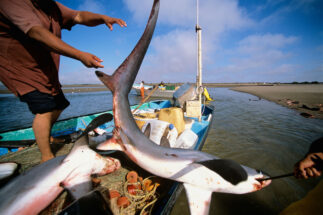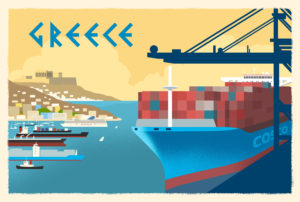Biodiversity loss has become a matter of global urgency on a similar scale to the climate crisis, which means the financial sector must give reversing the destruction of nature the same importance as avoiding carbon emissions. Achieving this will require investors to assess and reduce the contribution of their investments towards harming nature. One of the biggest challenges for investors is lack of information and data at the company level.
The Norwegian Government Pension Fund (GPFG) – also known as the Oil Fund – is a sovereign wealth fund invested in equities, bonds and real estate, with a market value of about US$1 trillion, including holdings in roughly 9,000 companies in 74 countries.
The Council on Ethics, where I am chief advisor, is appointed by the government to advise the manager of the fund, Norges Bank, Norway’s central bank, on whether investments comply with the fund’s ethical guidelines. Companies may be excluded from the fund if they contribute to or are themselves responsible for serious violations of norms, including severe environmental damage, serious or systematic human rights violations, or gross corruption.
The GPFG has already led efforts to address climate change by divesting significantly from companies whose fundamental business is about burning coal.
Protecting nature too
It is clear we are now in a period of rapid biodiversity loss emerging as a comparable crisis to climate change.
The “global assessment report on biodiversity and ecosystem services” published last year by the UN’s biodiversity panel, IPBES, found that one million of the world’s roughly eight million species are endangered, with many at risk of extinction in the coming decades. WWF’s recent Living Planet report documented a similar alarming decline in biodiversity, showing that the population sizes of mammals, birds, amphibians, reptiles and fish had declined by 68% between 1970 and 2016.
One million
of the world’s roughly eight million species are endangered, with many at risk of extinction in the coming decades
Habitats and ecosystems provide vital benefits to people, from supplying reliable water to pollinating food crops and regulating the climate. As a result, the scale of massive biodiversity loss today creates significant risks for companies and the economy. The World Economic Forum has estimated that more than half of the world’s gross domestic product (US$44 trillion) is moderately or highly dependent on nature and ecosystem services, and has placed biodiversity loss as one of the top risks in the next 10 years.
For more than a decade, the Council on Ethics has worked on cases where loss of biodiversity formed the basis for the exclusion of companies. Forest and plantation companies have been excluded if they destroy large areas of forest with important biodiversity. Deforestation constitutes one of the most serious threats to the preservation of ecosystems and biodiversity, particularly in the tropics.
Companies that harm UNESCO World Natural Heritage Sites, which are listed because of the unique and universal value of their natural landscapes, geology, ecosystems and/or biodiversity, have been excluded too. The council has also examined how far companies are involved in illegal, unreported or unregulated (IUU) fishing, and the extent to which they catch globally endangered species.
To date, we have assessed loss of biodiversity on a case-by-case basis, partly in the light of international agreements and norms, such as the presence of species on the International Union for the Conservation of Nature’s “Red List of Threatened Species”, or areas defined as World Natural Heritage Sites or Ramsar Wetlands.
Our recommendations have often rested on risks to species and ecosystems that are rare and vulnerable, and that contain high conservation value. However, the accelerating drivers of biodiversity loss today call for a systemic response.
Discerning biodiversity risks
A major problem we must overcome is biodiversity data, which is location-specific. When we assess the risk of biodiversity loss, for example from conversion of forest to plantations, we look at the scale of deforestation. Are large areas slated for clearing? We try to clarify if companies’ concession areas overlap with those known to be rich in biodiversity, and the consequences. Will habitats of threatened species be lost? What actions are the company taking to prevent and mitigate impacts? But many companies are not willing to share information, which makes the assessment even more difficult and time consuming. Investors should require companies to be more transparent and ask them to provide tangible information about how their operations affect biodiversity.
The council is now exploring whether to expand grounds for exclusion, to company activities that affect other protected areas of high conservation value beyond designated World Natural Heritage sites. And we are investigating trade in threatened wildlife which listed companies also appear to have a role in.
We note that there is an increased awareness among investors of the need to take action on biodiversity, and that some are now addressing biodiversity in their engagement with companies, and some are collaborating on initiatives. Investors need to understand and assess how their investees and portfolios are exposed to biodiversity loss, and the impact such loss may have. In other words, what damage to biodiversity are we causing through our investments, and how much are our investments dependent on biodiversity? We are aware of the great strides that data specialists and digital tracking technologies are making to assist these assessments.
Once financial institutions understand better their exposure to biodiversity risks, they can take steps to reduce these, whether through divestment or engagement. Here, we have some clout. By wielding the threat of exclusion, which may be perceived as a reputational as well as financial risk, we have seen that we can drive change in behaviour. However, influencing a company’s behaviour is not easy when the business idea itself is incompatible with preserving important biodiversity.









